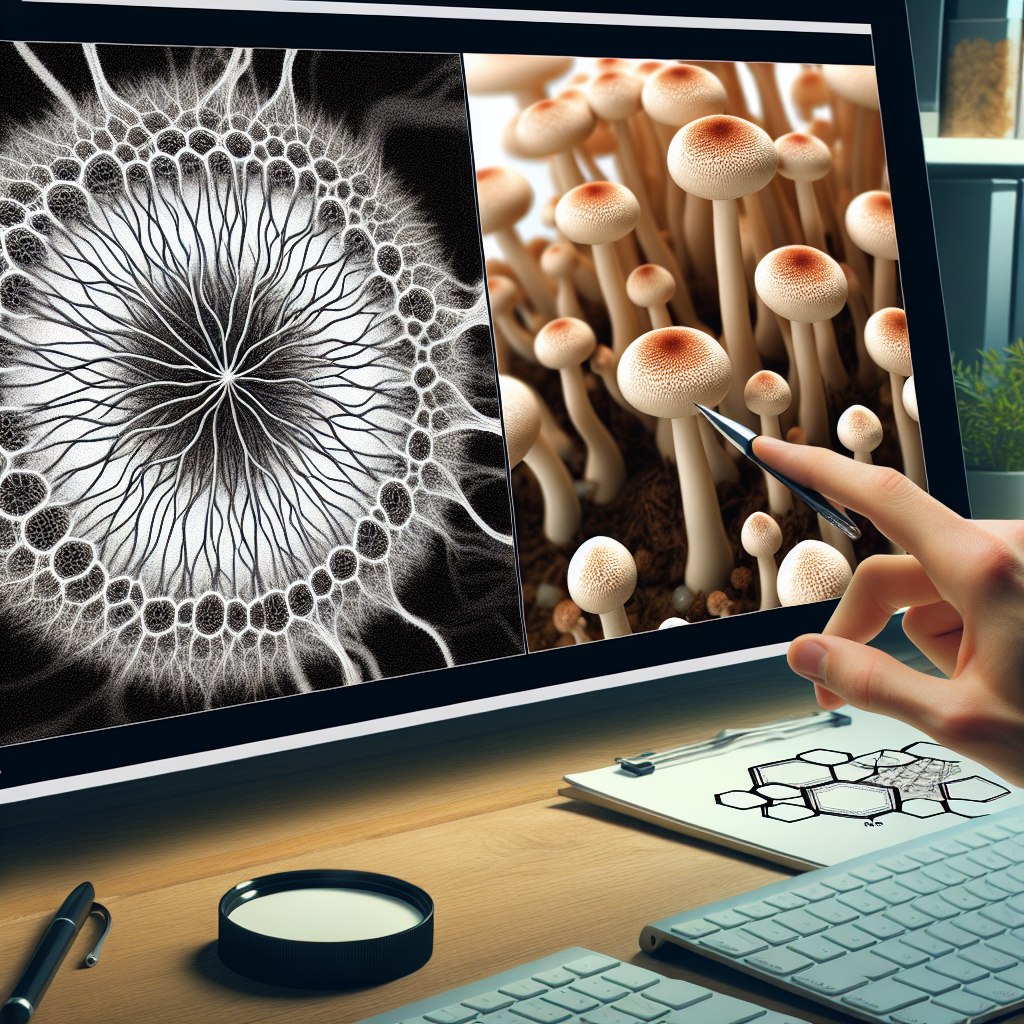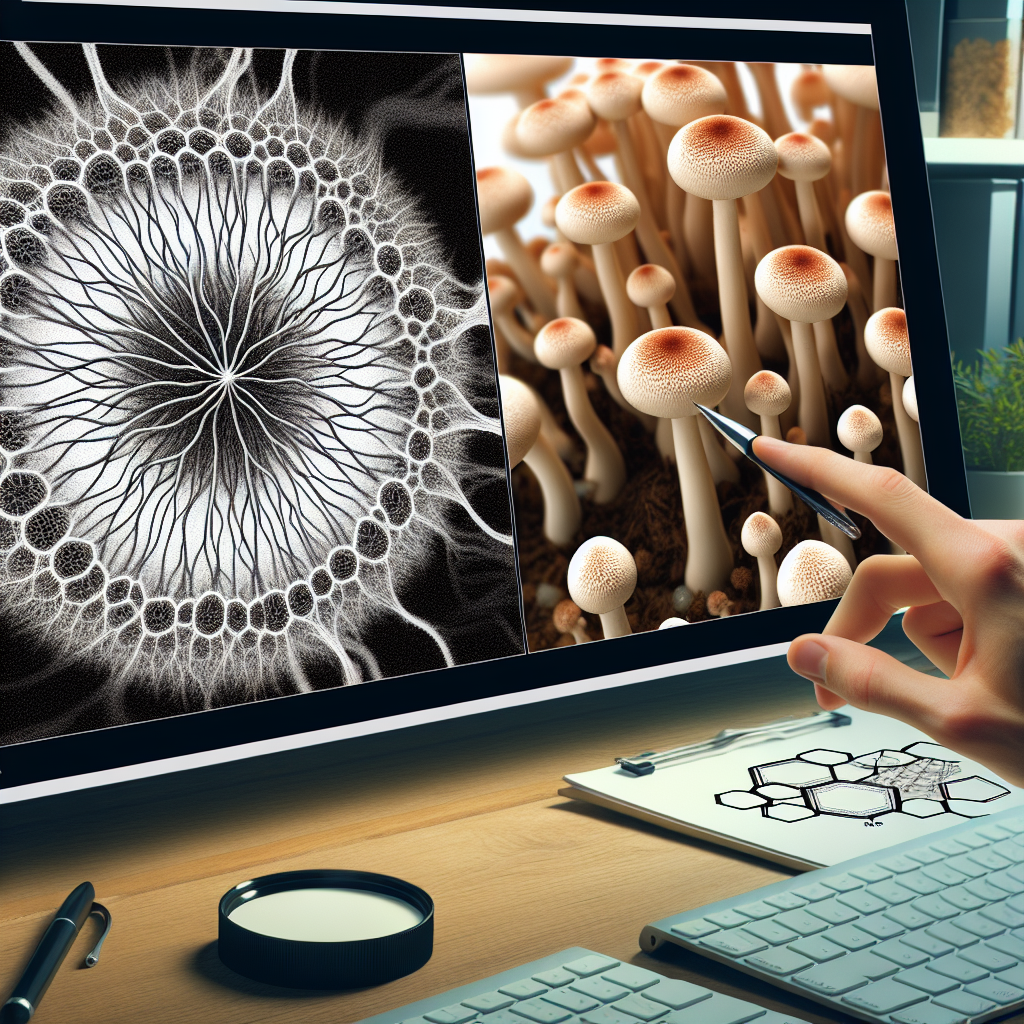In the article, “Understanding the Effect of Trich on Mycelium”, a profound exploration into the intricate relationship between fungi and contaminants will be encapsulated. You will gain insights into the potentially disruptive influence of Trichoderma, colloquially known as ‘Trich’, on the growth and development of Mycelium. Critical scientific investigations and experimental findings trace the effects these common soil-dwelling fungi may have on one another, shaping your understanding of this often overlooked aspect of ecology.

Understanding Trich
Definition of Trich
Trich, formally known as Trichoderma, is a capable group of beneficial and opportunistic soilborne fungi commonly found in diverse ecosystems. Trich is traditionally recognized for its role in producing cellulolytic enzymes and chitinases and being an aggressive antagonist against several pathogenic fungi, thus having a significant impact on the health and growth of various organisms, including Mycelium.
Origin and classification of Trich
The genus Trichoderma was first described by the botanist Christiaan Hendrik Persson in 1794. The name itself derives from the Greek words ‘tricho,’ meaning hair, and ‘derma,’ denoting skin. This directly references the distinctive spore bearing structures of the fungi. Trichoderma belongs to the phylum Ascomycota, family Hypocreaceae. The Trichoderma genus contains a large number of species, each with their unique characteristics and capabilities, further establishing Trich’s ecological versatility.
Physical characteristics of Trich
Trich frequently displays fast growth and distinguishes itself through a green or white cottony colony appearance. It produces asexual conidium spores, which are typically green. The conidiophores, or structures that bear the conidia, are extensively branched and closely resemble a penicillus structure. The pellicle, the outer layer where spores are born, is often white.
Understanding Mycelium
Definition of Mycelium
Mycelium is a vegetative part of a fungus, consisting of a mass of branching, thread-like hyphae. It forms the foundation of the fungal-colonial system, facilitating nutrient absorption, communication, and propagation. This network of connected hyphae is often hidden in the soil or within the substrate it inhabits.
Role in the ecosystem
Mycelium plays a crucial role in the broader ecosystem by breaking down organic material, facilitating recycling of nutrients, establishing symbiotic relationships with plants, and contributing to the formation of soils. Being nature’s decomposers, mycelium play a pivotal role in the circle of life, breaking down organic matter and providing nutrients to other organisms.
Physical and structural attributes of mycelium
Structurally, Mycelium comprises long thread-like cells or hyphae that form intricate networks. These networks can span large areas. A single cubic inch of soil can contain miles of these tiny mycelial threads. Mycelium is usually white but can adopt different colors, depending on the fungal species. Despite its delicate appearance, mycelium possesses tremendous strength and resilience, and it can adapt systematically to various conditions.
The Life Cycle of Trich
The Growth phase of Trich
Trich propagates through the formation and spread of conidia, which under suitable conditions germinate to produce hyphae. Then, intense hyphal growth (vegetative phase) ensues, resulting in the formation of mycelium. This mycelium continues to grow, colonize the substrate, and subsequently produce conidiophores which bear the next generation of conidia.
Spore formation and dispersal
As Trich grows, it forms conidiophores that bear and disperse conidia. These conidia are often airborne, meaning they can travel long distances to new substrates. Moisture and wind significantly influence the dispersal. Once the conidia make contact with suitable conditions, they can germinate and establish a new colony.
Conditions necessary for propagation
Trich thrives in a variety of conditions but typically prefers moist environments rich in organic matter. It is highly adaptable, able to survive in a range of pH levels, temperatures, and nutritional environments. Depending on the species, Trich can be either aerobes or anaerobes.
The Life Cycle of Mycelium
The developmental stages of Mycelium
The life cycle of mycelium commences with spore germination. Under favourable conditions, the fungal spores germinate to create hyphae. These hyphae grow and branch out extensively to form the mycelium. Further sexual or asexual reproduction leads to the formation of fruiting bodies and spores, thereby completing the cycle.
Reproduction processes in Mycelium
Mycelium can reproduce asexually through fragmentation, where a part of the mycelium breaks off and develops into a new individual. In terms of sexual reproduction, two compatible mycelia can fuse and form a dikaryotic mycelium. This mycelium then produces fruiting bodies bearing spores and with their release, the cycle continues.
Factors influencing Mycelium’s growth
Various environmental factors influence mycelium growth. These include available nutrients, temperature, moisture, pH and light. Different species of fungi perform optimally under different conditions. Disrupting these conditions can inhibit growth or lead to the death of the mycelium.
Interaction between Trich and Mycelium
How Trich affects Mycelium growth
Trich, being efficient and aggressive, can affect mycelium growth, primarily by competing for space and resources. It is known for invading other fungi’s territories, producing enzymes that degrade their cell walls, and parasitizing them by penetrating their cells. Consequently, Mycelium growth can be severely inhibited or stunted.
Conditions that facilitate Trich-Mycelium interaction
Mycelial growth and Trich often find themselves competing for the same space and nutrients, promoting interaction. Certain environmental conditions, such as high humidity levels and temperatures, can exacerbate this competition and facilitate more intense interactions.
Visual signs of Trich on Mycelium
Detecting Trich in a mycelium culture can be facilitated by noting changes in mycelium’s color, texture, or growth patterns. Trichoderma typically exhibits a greenish, fluffy mold growing on or around the mycelium. Additionally, the mycelium’s growth could be slowed down, or the development of fruit bodies might be inhibited.
Effect of Trich on Mycelium Growth
Effects on Mycelium’s physical appearance
Trich can alter the physical appearance of mycelium. It might cause discoloration, often towards a green hue, or cause the mycelium to appear fluffy or mossy. In severe cases, it might lead to complete destruction of the mycelium.
Impact on Mycelium’s growth pattern
Notably, Trich can influence mycelium’s growth pattern. As Trich competes with mycelium for resources and space, it can reduce the growth rate of mycelium, disrupt its typical radial spread, and cause thinning of the mycelial mat.
Alterations in Mycelium’s behavioral characteristics
Trich invasion can alter mycelium’s behavior. Stressed mycelium might heighten its defensive reactions, such as elevated enzymatic activity. Additionally, it might favor spore production over biomass development, thus preferring survival over growth.
Effect of Trich on Mycelium Health
How Trich impacts Mycelium nutrition
Trich competition for nutrients can starve mycelium, rendering it weak and malnourished. Trich can extract critical resources such as nitrogen, phosphorus, and other minerals from the substrate, decreasing the availability of these nutrients for mycelium.
The effect of Trich on survival of Mycelium
Competition and antagonistic interactions with Trich can threaten mycelium survival. By physically invading and parasitizing mycelium, Trich can disrupt its functions, cause cell death, and eventually lead to the decay of the mycelium culture.
Changes in Mycelium’s vitality due to Trich
Vitality, or the general health and vigor of mycelium can be negatively impacted by Trich. With reduced access to nutrients, disruption in normal growth patterns, and physical damage, the vitality of the mycelium culture is likely to decline in the presence of Trich.
Management and Control of Trich in Mycelium Cultures
Cultural practices for controlling Trich
Incorporating good cultural practices can mitigate the proliferation of Trich in mycelium cultures. This includes proper sterilization of the culture medium, maintaining optimal temperatures and humidity levels, avoiding overwatering and overcrowding, and timely inspection and removal of infected parts.
Biological and chemical methods of managing Trich
Biological controls such as the use of biocontrol agents can help manage Trich contamination. Similarly, chemical treatments using various fungicides can also effectively control Trich growth, albeit the risk of resulting in resistant strains.
The role of environment in managing Trich presence
Environmental management is crucial in checking Trich presence. Manipulating the environment, such as temperature, humidity, light, and nutrient availability, can create unfavorable conditions for Trich growth and reproduction while benefiting mycelium proliferation.
Research and Studies on Trich and Mycelium
Previous important studies on Trich and Mycelium
Prior research has extensively studied the antagonistic interactions between Trich and mycelium, emphasizing Trich’s role as a hyperparasite. Studies have explored Trich’s ability to produce cell-wall degrading enzymes and the effect of these enzymes on mycelium, thus providing crucial insights into its pathogenicity.
Current findings and research gaps
Recent findings continue to shed light on the complexity of this interaction. Advancements in genomics have allowed the exploration of this relationship at a genetic and molecular level. However, there is still much to learn about the nuances of these interactions, especially relating to various Trich and mycelium species’ interaction under varying environmental conditions.
Future areas of research in understanding Trich’s effect on Mycelium
Future research opportunities in this area include investigating the mechanisms of Trich resistance in certain species of mycelium. Furthermore, comprehending the diverse responses of different fungal species to Trich invasion can provide valuable information.
Significance of Understanding Trich’s Effect on Mycelium
Application in the field of mycology
Understanding the effect of Trich on mycelium is crucial in mycology, particularly in fungal conservation and cultivation. Knowing how to mitigate the effects of Trich on mycelium can prove beneficial in a wide range of applications from cultivation of edible and medicinal mushrooms to managing plant diseases.
Economic importance
From an economic point of view, Trich’s effect on mycelium can have implications in agriculture, forestry, and industry. Trich impacts the productivity of commercially cultivated mushrooms and could also influence the efficacy of mycelium-based bioremediation projects, thus understanding this interaction is economically significant.
Role in protecting and preserving Mycelium
An in-depth understanding of this interaction can contribute to developing effective strategies for protecting and preserving mycelium. This knowledge could foster more sustainable practices in mycology, ultimately helping to protect and maintain the ecological balance considering the critical role that mycelium plays in our ecosystems.
